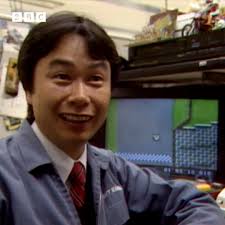
Introduction
Shigeru Miyamoto is a name that resonates deeply within the gaming community. As the creator of some of the most beloved video game franchises, including Super Mario and The Legend of Zelda, his contributions have had a profound impact on the video game industry. Born on November 16, 1952, in Sonobe, Japan, Miyamoto’s early fascination with art and design paved the way for his innovative work at Nintendo. Understanding his influence is crucial as it speaks to the evolution of gaming and its cultural significance.
Career at Nintendo
Miyamoto joined Nintendo in 1977, initially working on arcade games. His first major project was the creation of Donkey Kong in 1981, which introduced gamers to iconic characters like Mario and Donkey Kong itself. This game’s success launched Miyamoto into the spotlight and set the groundwork for his career in game design.
Throughout the 1980s and 1990s, Miyamoto continued to develop groundbreaking titles that not only entertained but also pushed the boundaries of gameplay mechanics. Super Mario Bros., released in 1985, revolutionized platform gaming and is credited with helping to resurrect the struggling video game market after the crash of 1983. Similarly, The Legend of Zelda, released in 1986, introduced players to an expansive open-world experience, setting the standard for action-adventure games.
Recent Developments and Legacy
As of 2023, Miyamoto continues to play a pivotal role at Nintendo, influencing projects beyond game design, including theme park attractions like Super Nintendo World. This expansion into themed entertainment showcases how Miyamoto’s vision extends beyond just video games into broader cultural experiences.
Miyamoto’s design philosophy often emphasizes player enjoyment and creativity. He believes in creating experiences that allow players to explore and engage with game worlds in compelling ways. His recent involvement in projects like the upcoming film adaptation of Super Mario Bros. highlights the enduring appeal of his creations and their capacity to adapt over time.
Conclusion
Shigeru Miyamoto’s contributions to the gaming industry are unparalleled, establishing him as a key figure in video game history. His creativity and innovation have not only shaped games but have also influenced global culture. As gaming continues to evolve, the principles that Miyamoto champions—imagination, exploration, and fun—remain central to the industry’s growth. Looking forward, the legacy of Miyamoto will undoubtedly inspire future generations of game designers and players alike.



